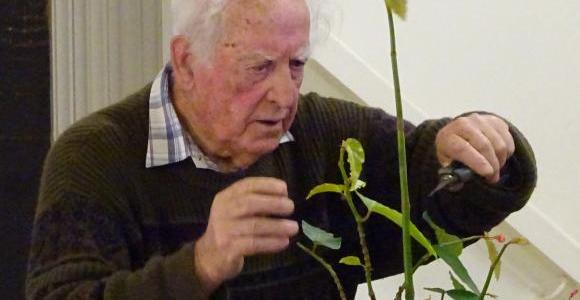
Begonias
You are here

Norman Gerraty (a past President of the Begonia Society) talked about growing & propagating begonias.
Begonias are found in the tropics and sub -tropics of South America, Africa, India, SE Asia and Pacific, and Mexico and named after a French Administrator, Michel Begon.
Begonias distinguishing features are the asymetrical (uneven leaves) and flowers ((both male and female) on same plant. There are 9 major groups - Rhizomatous, Rex, Semperaflorens, Cane/ Tree, Shrublike, Thick stemmed, Trailing/Scandent, Tuberous and Eliator.
They grow in temperate areas, grow fast, reasonably hardy, long flowering, seasonal and not too expensive if obtained from specialist growers.
Propagation is by leaf and stem/cane cuttings, rhizome, tuberous and seed. For leaf, trim to reduce size and cut stem on a slant, take stem cuttings about 10 cm long retaining the top 2 leaves. Rhizomes are by laying on the striking mix. There is no need for hormone powder and cuttings should be kept moist, humid and watered below to reduce cuttings from rot.
Norman showed how a mini glasshouse can be constructed by using a polystyrene box with no drain holes, sand or gravel on the bottom and topped with a sheet of glass.
For seed propagation, use a fine seed raising mix (or striking mix), soak the seed bed in water and then drain, sprinkle seed on bed, place in the mini glasshouse, wait 6-8 weeks for germination then prick out seedlings.
Norman's striking mix consists of a 1-1 mixture of perlite, vermiculite, sand, coir peat with a bit of blood and bone and a mixture of seasol watered in.








